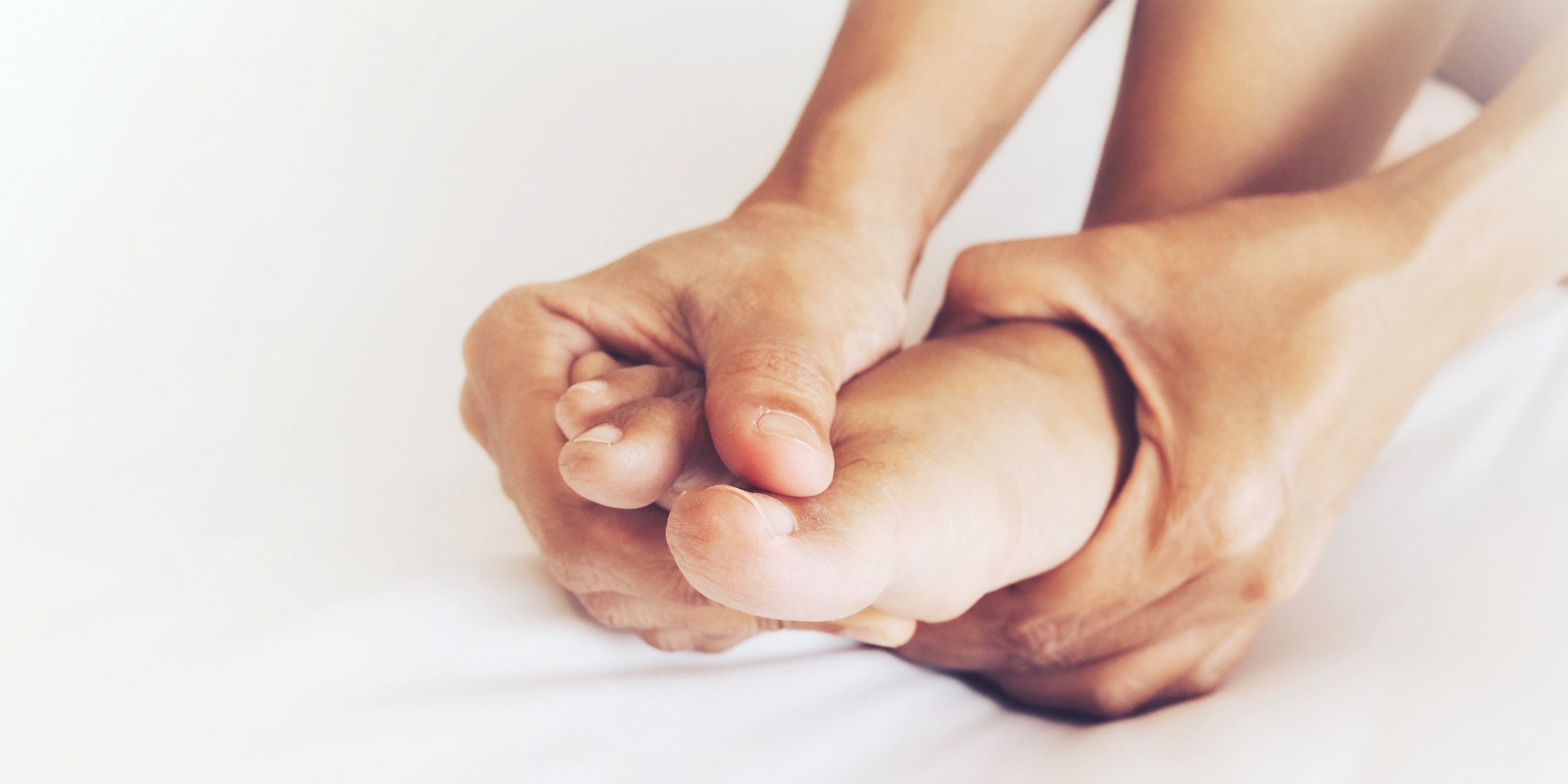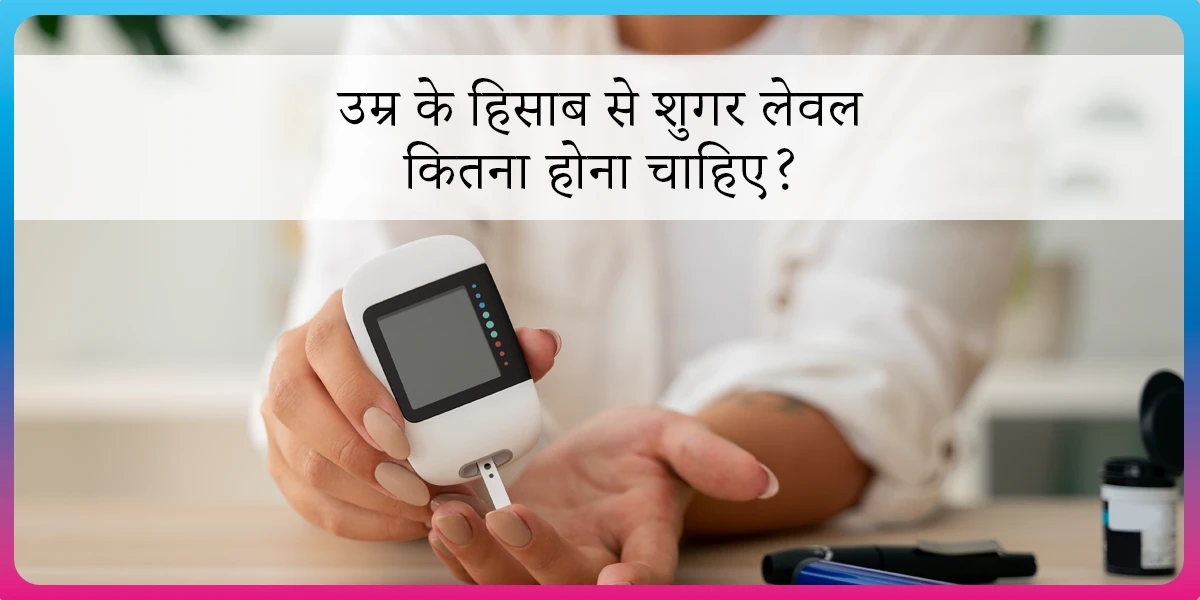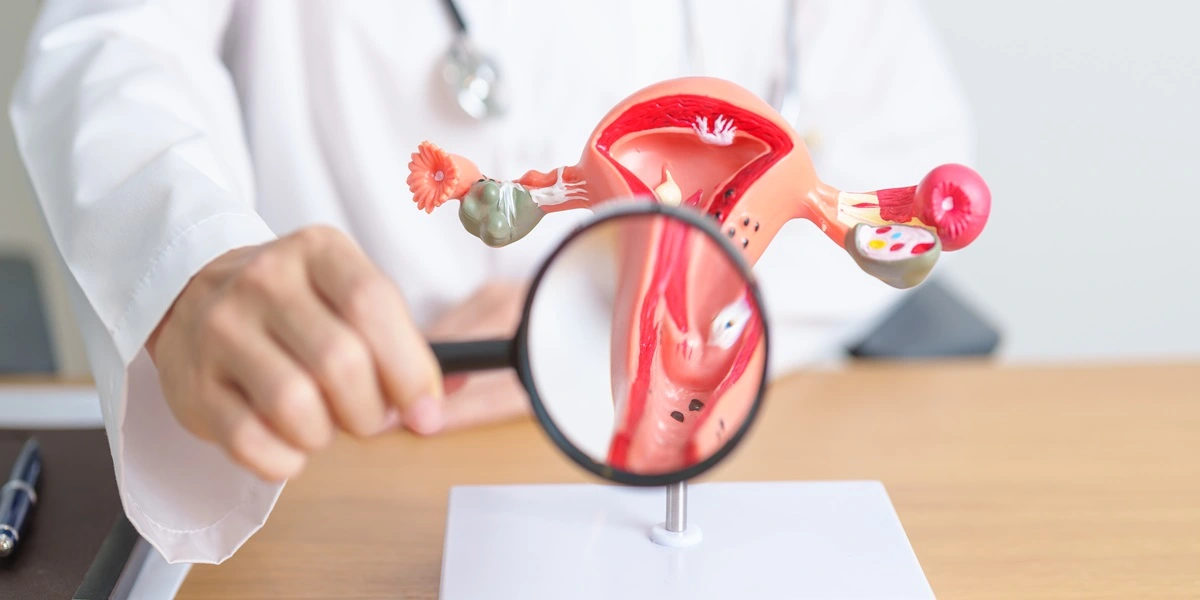Diabetes Foot Problems: Symptoms, Complications and Care

Diabetes Foot Problems
Foot problems in diabetes can be a common concern. If you or a loved one has diabetes, read on to find out more in detail about what foot problems can happen when you also have diabetes, symptoms of diabetes foot pain and how you can spot the signs and symptoms early to start the right treatment.
What is Diabetes Feet?
People who have diabetes are more prone to other health issues as compared to those who do not have diabetes. From damage to the liver and kidneys to vision issues and nerve damage, diabetes can lead to various other health concerns.
Diabetes feet is a condition where, because of diabetes, issues start developing in your feet and the surrounding areas. It is sometimes also referred to as diabetes foot syndrome.
With timely management, it is possible to spot the concerns right at the start, so that you can take the required health measures with your diabetes healthcare team.
Why Do Diabetes Patients Have Foot Problems?
When you have diabetes over some time, there is a likely chance that it can start affecting the various nerves in your body. This is known as diabetic neuropathy.
Don’t struggle alone & get the expert care you deserve
How Can Diabetes Affect the Feet?
- When you start developing diabetic neuropathy, it could cause a tingling sensation or pain in the affected area, especially in your feet.
- As a result, you may start to lose sensation in your feet.
- When you do not have any feeling or sensation in your feet, it may be difficult for you to realize if you get any cuts, bruises, sores, or bumps in your feet.
- This could mean that the same lingers on for a long, without you realizing that there is a wound in your feet that you need to take care of.
- Letting it grow can lead to diabetic foot infection, and if left unattended, it could grow worse and may cause more serious damage. In worst cases, diabetic foot problems could also lead to amputation.
Diabetes Foot Symptoms
Here are some of the most common signs of foot problems in diabetes:
- Diabetes brown spots on feet
- Darkening of the skin in the affected area
- Tingling or paining sensation in the affected and/or the surrounding area
- A feeling of numbness in the affected and/or the surrounding area
- Reduced ability to feel heat or cold sensation in the affected and/or the surrounding area
What Foot Problems Are Caused by Diabetes?
Anyone can get foot problems, but people who have diabetes have a higher chance of getting foot problems. Also, there can be a higher chance that these problems may create more issues and lead to more concerns if not treated at the right time.
Here are some of the most common foot problems that are caused by diabetes:
1. Calluses
- A callus happens when there is a build-up of skin in the area, which makes the skin harden up.
- This can usually happen on the underside of the feet.
- There can be many reasons why a callus may occur. One is that the weight distribution on the feet is uneven, and as a result, the foot that bears the more weight may develop a callus.
- It can also happen when you wear shoes that are too tight or ill-fitting.
- If you have a skin problem, that could also lead to a callus.
If you notice a callus, immediately visit your doctor as they can guide you on the proper way to take care of it. If needed, they can remove it as well with the right procedure.
2. Blisters
- A blister will usually form when your shoe rubs on your feet constantly at the same spot.
- This could often happen when you do not wear socks, or if you wear shoes that do not fit you properly.
- Many people have the habit of trying to pop a blister to make them go away, but you must not touch it or try to pop it.
Take your doctor’s advice and ask for an antibacterial cream that you can use to treat the blister. Your doctor may also ask you to clean and wrap the blister using soft bandages.
3. Dry skin
- Dry skin sounds like a harmless situation when it comes to developing foot issues with diabetes, it can lead to serious concerns if not taken care of at the right time.
- Dry skin can easily crack, which can make it easier for germs to enter your skin.
Speak to your doctor and ask for recommendations for antibacterial and moisturizing creams that you can use to treat your dry skin.
4. Ingrown toenails
- Sometimes, the edges of the nails start to grow inside your skin. This is known as ingrown toenails.
- One of the most common reasons why this could happen is due to pressure from ill-fitting shoes. It could also happen when you do not trim your toenails properly or if there is repeated pressure and injury to your toes from activities such as walking, running, aerobics, and so on.
- This can start to cause pain and put pressure along the edges of your nail.
- With constant pressure, the edges of your nail can start to cut through into your toe skin.
- You may experience swelling, redness, or pain and this could also lead to infection and sometimes drainage in the affected area.
Start by wearing footwear that is comfortable in its fit and trimming your toenails. If there is still pain and pressure in the area or if you notice other symptoms, get your feet examined by a doctor and follow their advice.
5. Athlete’s foot
- This is a type of fungus that can cause cracking in the affected area, as well as pain, redness, or itching.
- If there is a crack in the area, it is easier for the germs to enter your skin, leading to infection.
Get your feet examined by a doctor and ask for topical or oral solutions that can help cure the feet.
6. Corns
- Corn is somewhat similar to a callus as it also causes a build-up of skin and leads to the hardening of the skin in the affected area.
- This will usually appear in a bony area of the feet, on the toe, or in between toes.
- Corns usually appear when there is constant pressure on the area, either from the wrong size of footwear or if there is constant friction between your toes.
Ask your doctor about antibacterial creams that you may use or if you can gently use a pumice stone on the area.
7. Bunions
- A bunion can appear on the area in your foot when your big toe naturally moves towards your second toe.
- You may notice redness, pain, swelling, or a callus in the spot where your big toe joins the foot. Sometimes, it could also be on the spot where your big toe is constantly rubbing against the second toe.
- Bunions could form on one foot or both feet, especially if you naturally have big toes that lean in towards your second toe.
- This could often also happen if you regularly wear high heeled shoes that have narrow toe areas and the shoe puts extra pressure on your big toe, which further makes it lean inwards towards your second toe.
- Sometimes, using a soft pad between your big toe and second toe could help stop further concern.
If this does not help, your doctor may suggest some remedial device that you can place between the big and second toe to maintain some distance, especially when you wear closed shoes.
8. Hammertoe
- A weak muscle could sometimes make your toe naturally bent, and this is known as a hammertoe.
- Because of the weak muscle, the tendons in your toe become shorter, and as a result, the toe curls downwards towards your foot.
- This can sometimes be a family thing, where other members of your immediate family also have the same issue.
- You may also develop hammertoe if you wear shoes that are too small in size and have an uncomfortable and squeezed fit.
- Having a hammertoe can lead to other problems such as calluses, blisters, or sores.
Wearing corrective shoes or splints can sometimes help resolve the issue. In some cases, your doctor may suggest surgery to straighten the toe if the issue is too serious.
9. Fungal infections in the nails
- If you notice that your toenails are yellowish in color or very opaque, or if they have become too thick or brittle, or can come off from the remaining part of your nail, it could mean that you have a fungal infection.
- If the fungal infection has spread to the entire nail, the entire nail may crumble.
- Wearing shoes that are too moist or warm can sometimes facilitate an environment where a fungus can grow.
- A nail injury could also lead to a fungal infection.
Your doctor will suggest topical as well as oral antibacterial medications to help treat the fungal infection. In severe cases, your doctor might recommend removing the affected nail altogether.
10. Diabetic ulcers
- A deep sore or a break in the skin of your foot can turn into a foot ulcer.
- This could be due to minor cuts or scrapes you got in your feet that are taking time to heal, or even from ill-fitting shoes that constantly rub against your feet.
Diabetic ulcers are quite common in people who have diabetes, and you must take immediate care as soon as you notice them. Take your doctor’s advice on the best ways to cure diabetic ulcers.
11. Plantar warts
- These often look like calluses that appear on the ball of your feet or your heel.
- Plantar warts may look like calluses but will have small black spots in the center or could also have small pinholes on them.
- These may be painful and you may either find a single one or they may appear in a cluster.
- Plantar warts are usually caused by viruses that can infect the outer layer of skin on the soles of your feet.
It is very easy to get confused about whether you have a callus on the feet or a Plantar Wart. The best way to find out for sure is to get your feet examined by a doctor and let them decide on the best way to take care of and remove them.
Diabetes Foot Care
How to Take Care of Foot in Diabetes? One of the best ways to ensure that your feet are in good condition and spot any signs of diabetic foot problems right from the start is to have a proper diabetes foot management plan.
Here are some ways in which you can take care of your feet daily, especially if you have diabetes:
1. Check your feet every day
- Inspect your feet and look for any signs of redness, spots, discoloration, hardening or thickening of skin, cuts, bruises, warts, and ingrown toenails that are noticeable.
- Touch and inspect your toes and feet to see if you can feel any pain or discomfort. If you notice any signs that are different from the previous day, immediately consult your doctor.
2. Wear shoes that fit well and do not feel too tight or too loose.
- You mustn’t walk barefoot, even inside your home, no matter how clean your home is.
- This is because sometimes you may have a very small cut on the soles of your feet or on your feet that you may not be able to notice.
- Walking barefoot can make it easier for germs to enter the skin.
- Also, wearing shoes that fit well will ensure that the shoes are not too warm or too moist (tight shoes) and that no pebbles or debris will accidentally enter your shoes (loose shoes) and enter your skin.
- This will also help to avoid other diabetic foot problems such as ingrown toenails, hammertoes, and so on.
3. Trim your toenails straight
- Regularly trim your toenails so that they do not form ingrown toenails.
- If your toenails are too thick already or if you have any difficulty doing so, please visit a foot doctor (podiatrist) who will help you do it for you.
4. Wash your feet every day
- This will form a very basic part of your regular everyday foot care routine.
- Use basic warm water and regular soap to wash your feet every day. Do it even if you have spent the entire day at home.
- Warm water and soap will remove any bacteria that could be lingering on the skin of your feet.
- Avoid soaking your feet as it will lead to dry skin, which could end up causing cracks in the skin and making them easier for bacteria to enter.
5. Let the blood flow in your feet
- If you are sitting for too long at a stretch, take a break and walk around.
- Wiggle your toes and move your feet.
- Do regular activities that will not put too much pressure on your feet. Walk around and ensure you wear well-fitting socks.
6. Regular doctor visits
- Ask your diabetes healthcare team how often you need to get your feet checked by a doctor.
- Based on the type of diabetes you have, your overall health, the health of your feet as well as other factors, they will suggest how often you need to get your feet examined by a doctor.
Is Diabetes Foot Curable?
A well-planned diabetes management program can help take better care of your feet and avoid any diabetic foot problem from worsening.
Speak to your healthcare team to understand how best you can manage your diabetes health, and follow a daily inspection of your feet to spot any diabetic foot problem signs and symptoms at the start so that you can get them treated immediately.
Complications of Diabetes Foot
If it is not taken care of at the right time, diabetes foot complications can lead to more severe issues.
1. Deformities
- Damage to the nerves over a long period of time can weaken the muscles in your feet and cause various long-term problems.
- Various complications that can arise are hammertoes, a high arch (known as pes cavus) where it becomes difficult or impossible to make your feet flat when you put pressure on them, claw feet, or even damage to the ends of the bones that are below your toes, a condition that is also referred to as metatarsal heads.
2. Infections of the skin and bones
- Even the tiniest cut or wound could lead to more serious infections that may require hospitalization or complicated treatments.
- Most of these infections will usually happen in wounds that you may have previously treated by using antibiotics.
- This happens when there is constant damage to the blood vessels and the nerves and when there is a problem in the immune system as well.
3. Gangrene
- Diabetes can affect the blood vessels in your body, especially those that supply blood and oxygen to your hands and feet.
- With less blood and oxygen flow, the tissues in the feet or hands can die.
- Doctors may need to give oxygen therapy to bring back the flow of blood.
- In severe cases, it could lead to surgery and even amputation.
4. Abscess
- An infection in your feet can sometimes enter into the bones or even the tissues near the affected area.
- This could lead to pus formation in the area which is referred to as an abscess.
- A doctor may help drain the abscess to remove further chances of infection.
- Oxygen therapy can sometimes help. Or, in some cases, doctors may need to remove some tissue or bone to stop it from spreading further.
5. Amputation
- For people with diabetes, problems in the nerves and flow of blood can often lead to various wounds and injuries that can be difficult to spot immediately.
- As a result, the small wound can grow into a bigger injury and make the infection set in completely.
- Once the infection is too far gone to be healed, doctors may need to surgically amputate the area to stop the infection from spreading further.
Diabetes foot problems can be prevented if you start taking care of your feet from the start. Make sure you check your feet every day and inform your doctor immediately if you notice anything different, or feel any discomfort or pain.
This blog provides general information for educational and informational purposes only and shouldn't be seen as professional advice.
Don’t struggle alone & get the expert care you deserve



 References
References









